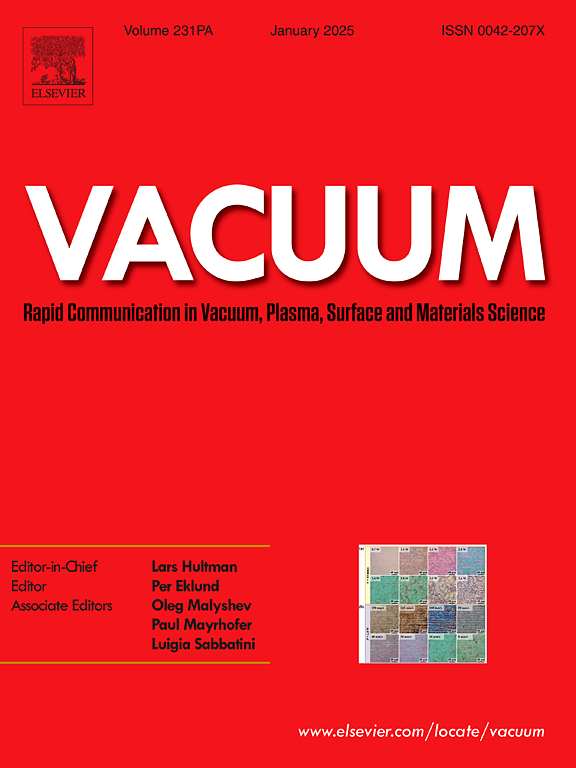用丙烯酸基杂化前驱体在聚乳酸无纺布上定制常压等离子体聚合工艺用于抗菌支架
IF 3.9
2区 材料科学
Q2 MATERIALS SCIENCE, MULTIDISCIPLINARY
引用次数: 0
摘要
聚乳酸(PLA)非织造布由于其多孔结构、可生物降解性、良好的力学性能和可再生性而被广泛应用于生物材料的支架领域。然而,聚乳酸表面的化学惰性和疏水性限制了其生物相容性,对通过改性抑制术后感染来提高其抗菌能力提出了挑战。此外,PLA非织造布对大多数化学方法的功能化和灭菌都很敏感。为了在不影响PLA非织造布的情况下解决这些问题,设计了一种定制的大气压等离子体(APP)系统,并使用丙烯酸和硝酸银的混合前驱体进行表面功能化。在该体系中,APP过程中产生的电子和活性物质被用于从杂化前驱体中还原银纳米粒子。通过APP聚合和还原同时进行,制备了一种嵌入银纳米粒子的富羧基聚合膜,并将其沉积在PLA非织造布表面。本研究综合分析了应用APP方法功能化的PLA非织造布表面的润湿性、亲水性稳定性、表面元素组成、生物相容性和抗菌性能。与传统方法相比,该方法能够固定化更高比例的羧基官能团,提高了抗菌性能的效率。本文章由计算机程序翻译,如有差异,请以英文原文为准。
Customized atmospheric pressure plasma polymerization process with an acrylic acid-based hybrid precursor on polylactic acid nonwoven for antibacterial scaffolds
There is considerable interest in applying polylactic acid (PLA) nonwoven as a scaffold in biomaterials due to its porous structure, biodegradability, favourable mechanical properties and renewable nature. However, the chemically inert and hydrophobic surface of PLA limits its biocompatibility and poses challenges to improving its antibacterial ability through modification for inhibiting postoperative infection. In addition, PLA nonwoven is sensitive to most chemical methods for both functionalization and sterilisation. To tackle these issues without impairing PLA nonwovens, a tailored atmospheric pressure plasma (APP) system along with a hybrid precursor of acrylic acid and silver nitrate was designed and employed for surface functionalization. In this system, electrons and reactive species created during the APP process were utilised for reducing silver nanoparticles from the hybrid precursor. By performing APP polymerization and reduction simultaneously, we prepared a silver nanoparticle-embedded and carboxyl-rich polymerized film was prepared and deposited on the PLA nonwoven surface. This study presents a comprehensive analysis of the wettability, hydrophilicity stability, surface elemental composition, biocompatibility and antibacterial efficacy of the PLA nonwoven surface functionalized by the proposed APP method. Compared to conventional methods, this process is capable of immobilising a higher percentage of carboxyl functional groups with improved efficiency in enhancing antibacterial properties.
求助全文
通过发布文献求助,成功后即可免费获取论文全文。
去求助
来源期刊

Vacuum
工程技术-材料科学:综合
CiteScore
6.80
自引率
17.50%
发文量
0
审稿时长
34 days
期刊介绍:
Vacuum is an international rapid publications journal with a focus on short communication. All papers are peer-reviewed, with the review process for short communication geared towards very fast turnaround times. The journal also published full research papers, thematic issues and selected papers from leading conferences.
A report in Vacuum should represent a major advance in an area that involves a controlled environment at pressures of one atmosphere or below.
The scope of the journal includes:
1. Vacuum; original developments in vacuum pumping and instrumentation, vacuum measurement, vacuum gas dynamics, gas-surface interactions, surface treatment for UHV applications and low outgassing, vacuum melting, sintering, and vacuum metrology. Technology and solutions for large-scale facilities (e.g., particle accelerators and fusion devices). New instrumentation ( e.g., detectors and electron microscopes).
2. Plasma science; advances in PVD, CVD, plasma-assisted CVD, ion sources, deposition processes and analysis.
3. Surface science; surface engineering, surface chemistry, surface analysis, crystal growth, ion-surface interactions and etching, nanometer-scale processing, surface modification.
4. Materials science; novel functional or structural materials. Metals, ceramics, and polymers. Experiments, simulations, and modelling for understanding structure-property relationships. Thin films and coatings. Nanostructures and ion implantation.
 求助内容:
求助内容: 应助结果提醒方式:
应助结果提醒方式:


